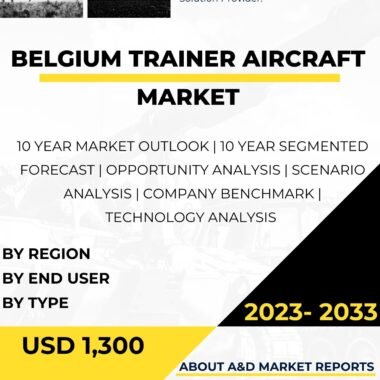Description
The United States has a rich history of developing and utilizing trainer aircraft to prepare its military pilots for the complexities of modern aerial warfare. These aircraft serve as essential tools in the training pipeline, imparting the necessary skills, knowledge, and experience to future aviators. From the early days of aviation to the present, the U.S. has consistently invested in trainer aircraft to maintain the highest standards of pilot proficiency and ensure a ready and capable air force.
The origins of U.S. trainer aircraft can be traced back to the early 20th century when military aviation was in its infancy. During World War I, the U.S. military recognized the need for specialized aircraft to train pilots quickly and efficiently. The Curtiss JN-4 “Jenny” became one of the most iconic trainer aircraft of that era, providing thousands of pilots with their first flight experiences.
In the interwar years, the U.S. Army Air Corps and the U.S. Navy expanded their training programs, leading to the development of more advanced trainer aircraft. The Stearman Model 75, commonly known as the “Stearman,” emerged as another iconic biplane trainer used extensively in both services. Its rugged design and forgiving flight characteristics made it an ideal platform for primary flight training.
World War II brought a massive expansion of the U.S. military and an unprecedented demand for trained pilots. The need for capable trainer aircraft surged, and manufacturers responded with innovative designs and mass production. The North American AT-6 Texan, known as the “SNJ” in the Navy, was one of the most widely used advanced trainers of the era. Its versatility allowed it to serve as both a primary and advanced trainer, preparing pilots for the complexities of high-performance aircraft.
The post-World War II period saw significant technological advancements in aviation, leading to the introduction of jet-powered aircraft. The transition from propeller-driven to jet-powered platforms necessitated new training methods and specialized trainer aircraft. The T-33 Shooting Star, derived from the Lockheed P-80/F-80, became the first jet trainer to equip the U.S. Air Force. It provided pilots with their first experience in jet flight and played a crucial role in preparing them for the high-speed capabilities of modern fighter aircraft.
The Korean War further highlighted the importance of advanced jet training. The need for highly skilled jet pilots led to the introduction of the North American T-28 Trojan, a piston-engine trainer, and the T-37 Tweet, an all-jet trainer. The T-37 was particularly notable for its tandem seating arrangement, allowing instructors to provide real-time guidance and evaluation to trainees.
In the 1960s, the U.S. Air Force introduced the Northrop T-38 Talon, a supersonic jet trainer, to meet the demands of advanced pilot training. The T-38 remains in service to this day, providing advanced training for fighter and bomber pilots. Its high performance and agility make it an ideal platform for preparing pilots for the challenges of flying modern combat aircraft.
The U.S. Navy also advanced its training capabilities with the introduction of the T-2 Buckeye and the T-45 Goshawk. The T-2 served as the Navy’s intermediate jet trainer for decades, while the T-45, a derivative of the British Hawk trainer, became the Navy’s primary jet trainer, preparing carrier-based pilots for the unique demands of naval aviation.
With the advent of more sophisticated aircraft and increasingly complex mission profiles, the U.S. military recognized the need for more advanced training systems. As a result, the concept of “lead-in fighter training” (LIFT) emerged. LIFT programs, such as the USAF’s Introduction to Fighter Fundamentals (IFF) and the U.S. Navy’s Strike Fighter Advanced Readiness Program (SFARP), provide pilots with enhanced tactical training before they transition to frontline fighter aircraft.
In recent years, the U.S. military has also incorporated high-fidelity flight simulators into its training curriculum. Advanced simulators, combined with computer-based instruction, allow for cost-effective and highly realistic training scenarios, supplementing in-flight training.
The U.S. Air Force, in collaboration with industry partners, has been exploring the use of virtual reality and augmented reality technologies to further enhance pilot training. These technologies offer immersive training experiences and enable pilots to practice complex maneuvers and mission scenarios in a virtual environment.
The U.S. military’s approach to pilot training emphasizes a tiered and progressive system. Students typically undergo initial training on basic flight concepts, progress to more advanced aircraft and mission profiles, and finally, receive specialized training tailored to their assigned roles, whether it be fighter, bomber, transport, or reconnaissance.
Moreover, the introduction of remotely piloted aircraft (RPA) has expanded the role of trainer aircraft. RPA pilots undergo a unique training pipeline that includes simulators and specialized instruction on the ground before progressing to flying operational missions from ground control stations.
In addition to military training, the U.S. civilian aviation sector also relies on trainer aircraft to prepare pilots for various roles, including commercial aviation, general aviation, and public service missions. Flight schools and aviation academies throughout the country utilize trainer aircraft to train the next generation of civilian pilots.
In conclusion, the United States’ commitment to maintaining a highly skilled and capable air force has driven the development and utilization of a wide range of trainer aircraft. From the early days of aviation to the present, these aircraft have been crucial in preparing military and civilian pilots for the complexities of flight and modern aerial warfare. As technology continues to advance, the U.S. military will continue to invest in cutting-edge training systems, ensuring that its aviators remain at the forefront of aviation proficiency and readiness.




